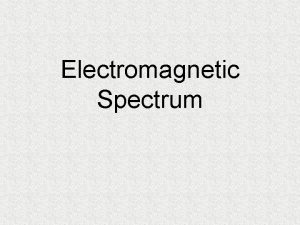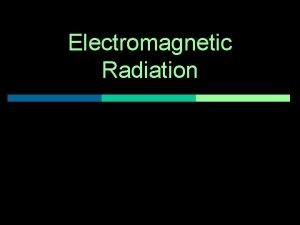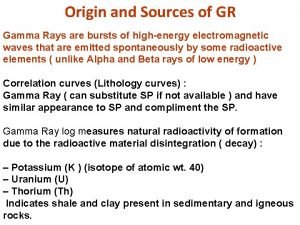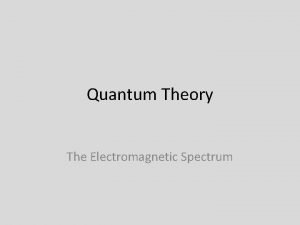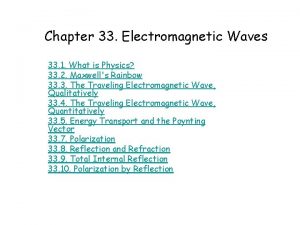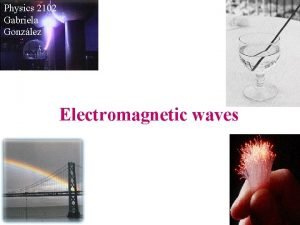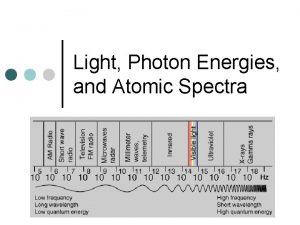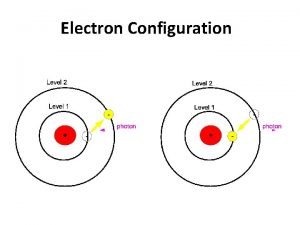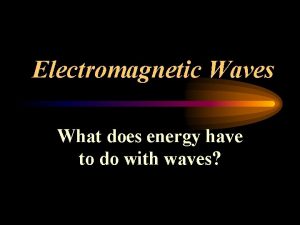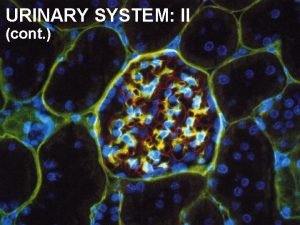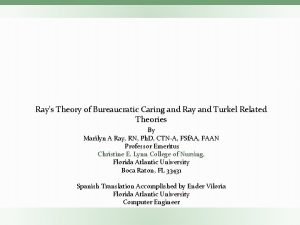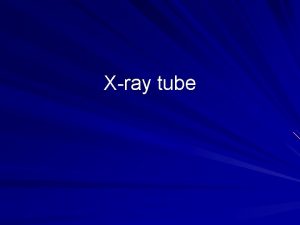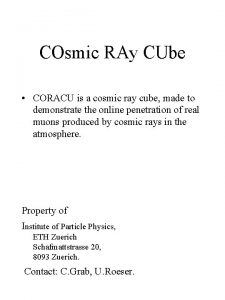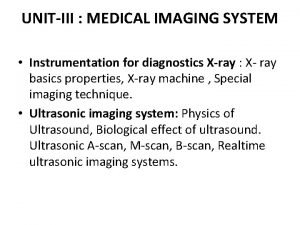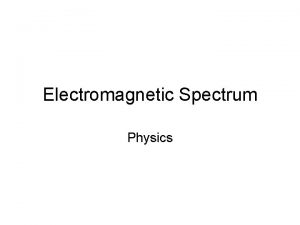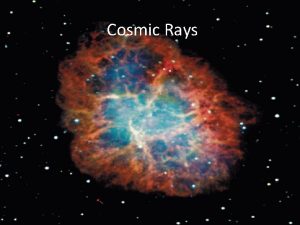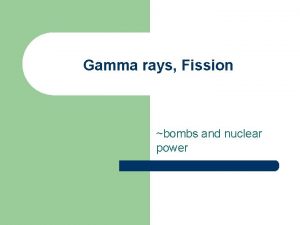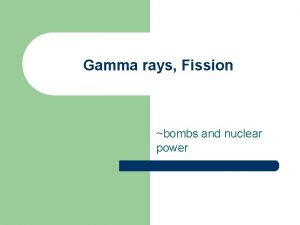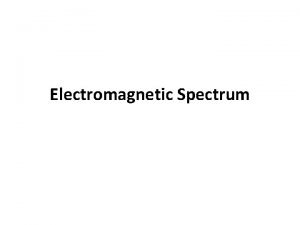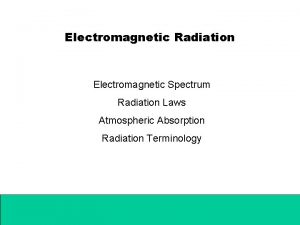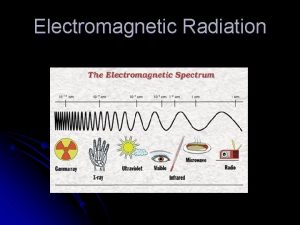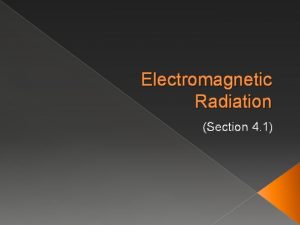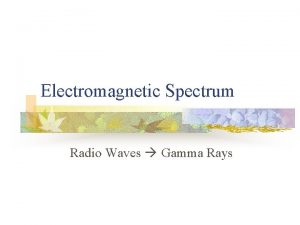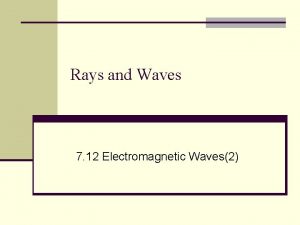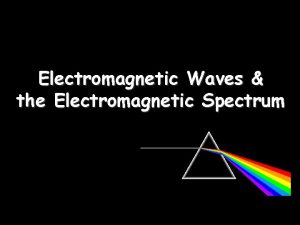1 Source of Electromagnetic Radiation A Gamma Rays






































- Slides: 38



1 Source of Electromagnetic Radiation A. Gamma Rays Following Beta Decay Gamma radiation is emitted by excited nuclei in their transition to lower lying nuclear levels. Notes: 1) For common examples widely used as gamma ray calibration sources. In each case, a form of beta decay leads to the population of excited state in the daughter nucleus. 2) The gamma rays from any one transition are nearly monoenergetic. 3) The common gamma ray source based in beta decay are generally limited to energies below about 2. 8 Me. V.


B. Annihilation Radiation When the parent nucleus undergoes beta-plus decay, additional electromagnetic radiation is generated. The origin lie in the fate of the positrons emitted in the primary decay process. Annihilation Radiation: The original positron and electron disappear and are replaced by two oppositely directed 0. 511 Me. V electromagnetic photons known as annihilation radiation. Example: the decay of 22 Na:

C. Gamma Ray Following Nuclear Reactions If gamma rays with energies higher than those available from beta-active isotopes are needed, some other process must lead to the population of higher-lying nuclear states. Example 1: ~4. 44 Me. V Example 2: ~6. 130 Me. V

D. Bremsstrahlung When fast electrons interaction in matter, part of their energy is converted into electromagnetic radiation in the form of Bremsstrahlung. Notes: 1) For monoenergetic electron that slow down and stop in a given material, the Bremsstrahlung energy spectrum is a continuum with photon energies that extend as high as the electron energy itself. 2) The shape of the energy spectrum from an x-ray tube can be beneficially alter by filtration or passage through appropriate absorber materials. 3) Bremsstrahlung is also produced by other source of fast electrons, including beta particles. I 4) In addition to Bremsstrahlung, characteristic x-rays are also produced when fast electron pass through an absober. Therefore, the spectra from x-ray tubes or other Bremsstrahlung sources also show characteristic xray emission lines superimposed on the continuous Bremsstrahlung spectrum.

E. Characteristic X-Rays If the orbital electrons in an atom are disrupted from their normal configuration by some excitation process, the atom may be exist in an excited state for a short period of time. There is a nature tendency for the electrons to rearrange themselves to return the atom to its lowest energy state or ground state within a time that is characteristically a nanosecond or less in a solid material. The energy librated in the transition from the excited to the ground state takes the form of a characteristic x-ray photon whose energy is given by the energy difference between the initial and final states.

























Summary





Buildup 积累因子 source direct detector scattered Buildup factor, depends on the type of gamma ray detector and the geometry of the experiment.
 Who discovered the gamma rays
Who discovered the gamma rays Raging martians invade venus
Raging martians invade venus Gamma rays uses
Gamma rays uses Cobalt-60 uses in food
Cobalt-60 uses in food Origin of gamma rays
Origin of gamma rays Extreme low frequency
Extreme low frequency Conclusion of electromagnetic spectrum
Conclusion of electromagnetic spectrum Light is electromagnetic wave true or false
Light is electromagnetic wave true or false Types of radiation in the electromagnetic spectrum
Types of radiation in the electromagnetic spectrum Electromagnetic radiation chart
Electromagnetic radiation chart Intensity em wave
Intensity em wave Intensity of wave
Intensity of wave When electromagnetic radiation of wavelength 300
When electromagnetic radiation of wavelength 300 Em waves spectrum
Em waves spectrum Facts about electromagnetic radiation
Facts about electromagnetic radiation Which telescope detects invisible electromagnetic radiation
Which telescope detects invisible electromagnetic radiation Dct
Dct Urineferous
Urineferous Limitations of remote sensing
Limitations of remote sensing Marilyn anne ray theory
Marilyn anne ray theory Different photographic rays
Different photographic rays Skew rays in optical fiber
Skew rays in optical fiber Protective housing of x-ray tube
Protective housing of x-ray tube Triangle that has no congruent sides
Triangle that has no congruent sides Angle pair relationships
Angle pair relationships Visual ray method in perspective projection
Visual ray method in perspective projection Example of opposite rays
Example of opposite rays What is split complementary color scheme
What is split complementary color scheme Cathode rays
Cathode rays Lesson 1-3 segments rays parallel lines and planes
Lesson 1-3 segments rays parallel lines and planes Tangent rays of the sun
Tangent rays of the sun Cosmic ray cube
Cosmic ray cube Sun's rays
Sun's rays Svensmark
Svensmark Properties of x rays
Properties of x rays Name of angles
Name of angles Cross section of a tree bast
Cross section of a tree bast Opposite rays
Opposite rays X rays
X rays

